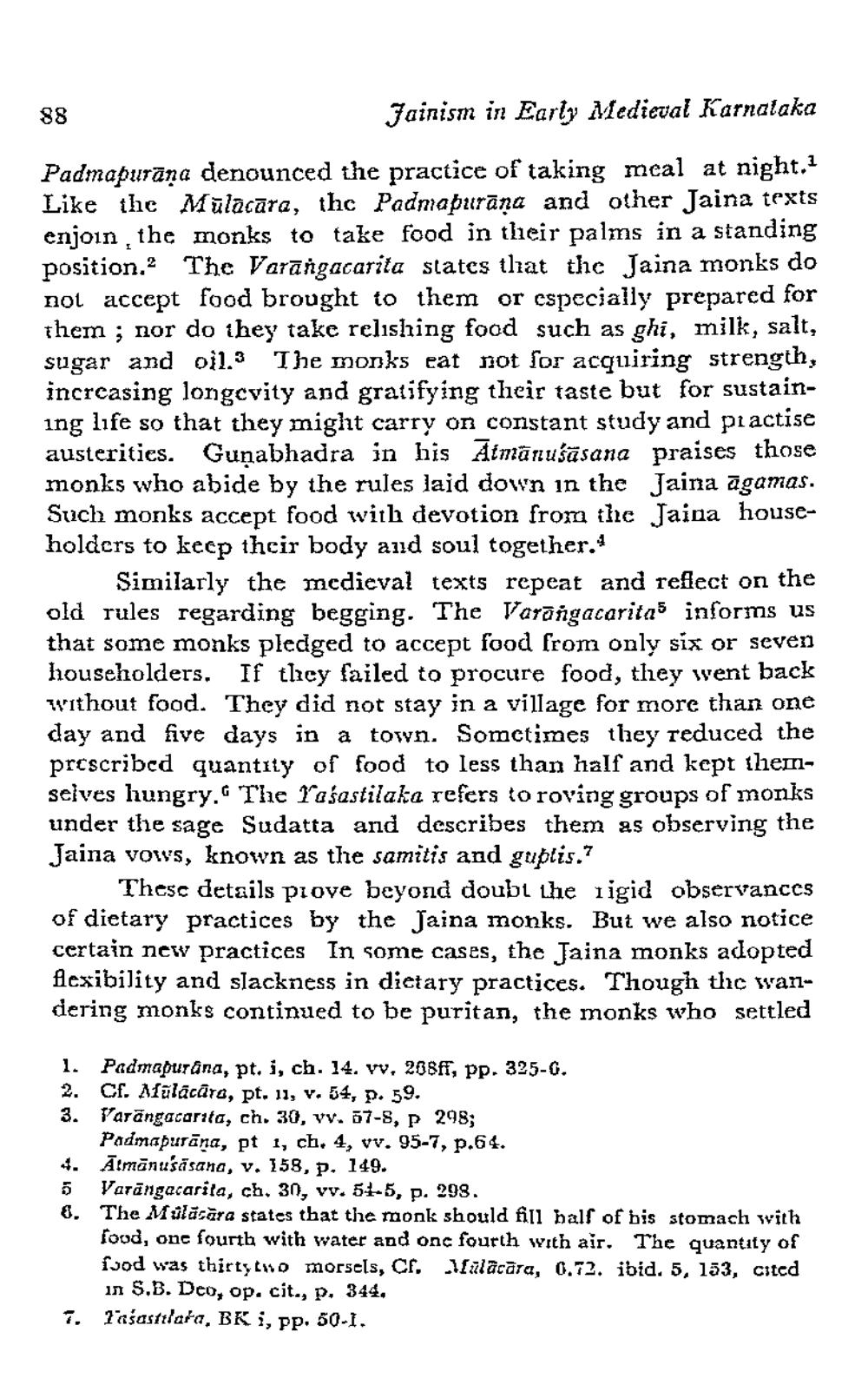________________
88
Jainism in Early Medicval Karnalaka
Padmapurāna denounced the practice of taking mcal at night. Like the Mülacara, thc Padnapurāna and other Jaina texts enjoin the monks to take food in their palms in a standing position. The Varangacarita states that the Jaina monks do not accept food brought to them or especially prepared for them ; nor do they take relishing food such as ghi, milk, salt, sugar and oil.3 The monks eat not for acquiring strength, increasing longevity and gratifying their taste but for sustaining life so that they might carry on constant study and practise austerities. Gunabhadra in his Almānušāsana praises those monks who abide by the rules laid down in the Jaina āgamas. Such monks accept food with devotion from the Jaina householdcrs to keep their body and soul together."
Similarly the medieval texts repeat and reflect on the old rules regarding begging. The Varangacaritas informs us that some monks pledged to accept food from only six or seven householders. If they failed to procure food, they went back without food. They did not stay in a village for more than one day and five days in a town. Sometimes they reduced the prescribed quantity of food to less than half and kept thenselves hungry. The lasastilaka refers to roving groups of monks under the sage Sudatta and describes them as observing the Jaina vows, known as the samitis and gublis.?
These details piove beyond doubt the rigid observances of dietary practices by the Jaina monks. But we also notice certain new practices In some cases, the Jaina monks adopted flexibility and slackness in dietary practices. Though the wandering monks continued to be puritan, the monks who settled
1. Padmapurana, pt. i, ch. 14. vv, 208ff, pp. 325-0. 2. Cf. Alūlācāra, pt. 11, v. 54, p. 59.
Varāngacarita, ch. 30, vv. 57-8, P 298;
Padmapurāna, pt 1, ch. 4, vv. 95-7, p.64. 4. Almānusäsang, v. 158, p. 149. 5 Varāngacarita, ch, 30, vv. 51-5, p. 298. 8. The Mulācāra states that the monk should fill ball of his stomach with
food, one fourth with water and one fourth with air. The quantity of food was thirty tno morsels, Cr, falacāra, 0.72. ibid. 5, 153, cited
in S.B. Deo, op. cit., p. 344. 7. Pašastılara, BK i, pp. 50-1.




